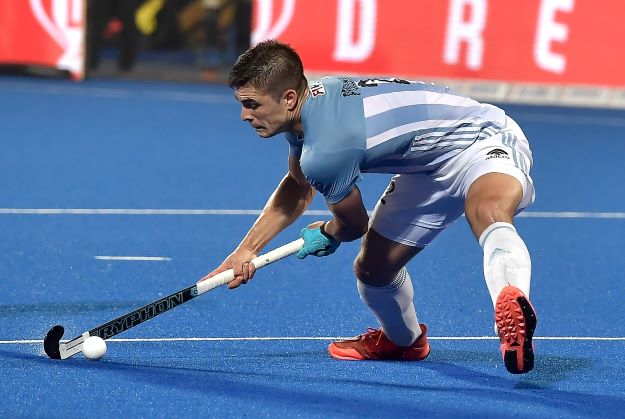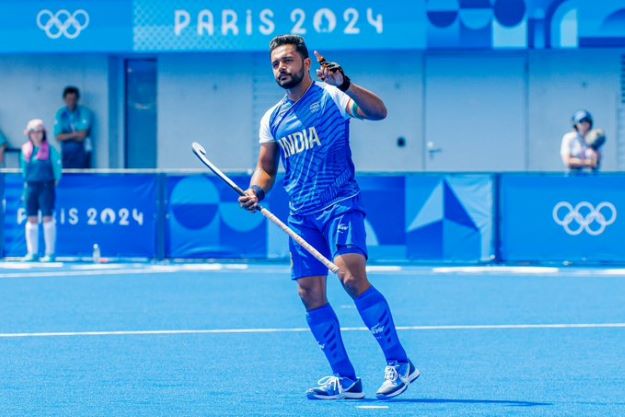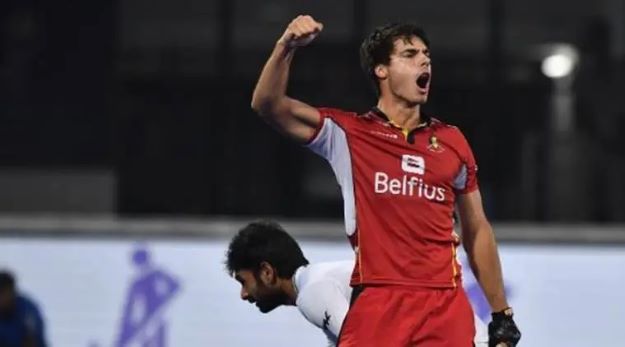Steady Decline of Penalty Corner Conversions in World Hockey!
Modern hockey has evolved with time with fast-paced action being the order of the day. It is only natural that newer trends would emerge as the sport evolves and the one of the growing trends witnessed in modern hockey is the steady decline of penalty corner conversions across teams (fancied as well as less-fancied teams). The likes of Alexander Hendrickxx, Harmanpreet Singh, Gonzalo Peillat, Blake Govers, Jip Janssen, Tom Boon, etc have found it exceedingly challenging to rifle the ball into the opponents’ cage.
At the 2024 Paris Olympics, bronze medallist India earned the most number of penalty corners (53) among all men teams, but they could profit from them only on 9 occasions with a few scored through the indirect route or resulted in a penalty stroke. What is interesting is that Indian captain Harmanpreet Singh is the top goal-scorer at the 2024 Paris Olympics with 10 goals even as his team earned 53 penalty corners. Paris Olympics gold medallist Netherlands could score just 6 goals from their 43 penalty corners earned in the Olympic campaign – even silver medallist Germany scored just 5 goals from 20 penalty corners. Australia also struggled, scoring 5 goals from 34 penalty corners. Belgium managed to fire home 10 goals from 41 short corners – Great Britain and Spain endured the lowest penalty corner conversion rate scoring 6 and 3 goals, from 51 and 36 short corners, respectively. All teams found the going tough during the penalty corner routine.

The scenario is more or less same in the women’s hockey competition at the 2024 Paris Olympics. The likes of Yibbi Jansen, Agustina Gorzelany, Frederique Matla, and Gu Bingfeng did not quite took the Paris Olympics by storm with their drag-flicker prowess. Paris Olympics bronze medallist Argentina managed 9 goals from 52 short corners – Paris Olympics silver medallist China could score 9 goals from 48 short corners. Belgium women could score 6 goals from 40 penalty corners, while Germany could contrive only 5 goals from short corners – Spain eves also had been disappointing with their PCs, converting just 2 out of their 35 shorties – similarly, Great Britain could find the back of the cage only 4 times from their 36 short corners.
So, what has dramatically changed in world hockey that teams are ‘feeling the heat’ to score from their set-pieces. Of course, modern teams are empowered with much better equipment than what it used to be ten-fifteen years back. Surely, it has a lot more to do with than just better equipment. Former Japan and Pakistan men’s hockey team coach Siegfried Aikman puts things in perspective. “Penalty corner defending is no longer considered dangerous by any international side. Although better equipment is a contributing factor, the larger point is that the deep defence of teams are much more organized and better trained than before. The fitness levels of the defenders in modern hockey is very impressive, which means that there is a lot of pressure on drag-flickers to score,” opines Aikman, who is currently serving as the Oman hockey team coach.
Read Much-Needed Tahir Zaman Coach Boost for Pakistan Hockey!
The Dutchman believes teams across the globe would think to put their thinking cap on and ensure they make the most of their shorties. “The role of short corner injector is the key and not much attention is accorded to this aspect of the game. It is really crucial for PC injector to relay the ball at a precise speed so that stopper can do the needful before the drag-flicker can unleash. Every team have good first-rushers – first rusher takes away the drag and eliminates the speed. So it is important for drag-flickers to cut down on their release time when they are flicking and for that to happen, injector has to find the right balance of relaying the ball for the stopper. The objective should to enable the drag-flicker to execute the flick even before the firs-rusher comes near him and that is possible with shorter release time,” Aikman makes his point.

He shares his perspective on how drag-flickers enjoy more success when they are an unknown commodity in world hockey. “So many times we see drag-flickers arrive on the international stage and convert shorties with ease. Thanks to the Pro League, teams are playing each others so regularly that within a short span of time that opponents can effectively do their homework on drag-flickers. To cite an example, Belgium’s Alexander Hendrickxx would convert consistently every time Belgium won a short corner when he first came on to the international scene, but we saw that consistency is no there anymore – we saw at the Paris Olympics. Every deep defence of any team are working hard on their PC defending drills that is making it really tough for both men and women teams are struggle to convert their drag-flicks.”
Read All You Want To Know About Men’s Asian Champions Trophy
Former Indian coach Jose Brasa, who is currently serving as coach of Belgium club Old Club of Liege, poured out his thoughts on the steady decline of short corner conversions. “Every international side have one or two solid first-rushers – in India, you have Amit Rohidas – the advent of technology (video referrals) has made it even tougher for drag-flickers to score. There are times where drag-flickers find the back of the cage and the on-field umpire may have allowed a goal, but when referred by the opposition the video umpire may rule as ‘dangerous’ and not allow the game. So it has become exceedingly challenging to break the deep defence of teams,” says Brasa.

Read Malaysian Hockey Poised for a ‘New Beginning’ Under Coach Sarjit Singh
At the 2024 Paris Olympics, a total of 424 penalty corners were earned in the tournament with only 62 converted which points to a conversion rate of 14.6%. In the women’s competition, a total of 378 penalty corners were earned in the tournament with only 59 converted, which points to a conversion rate of 15.6%. Clearly, drag-flickers across teams would have to find more effective ways to sound the board. But its’ not going to be easy as with teams working overtime to put up a robust defensive structure.




